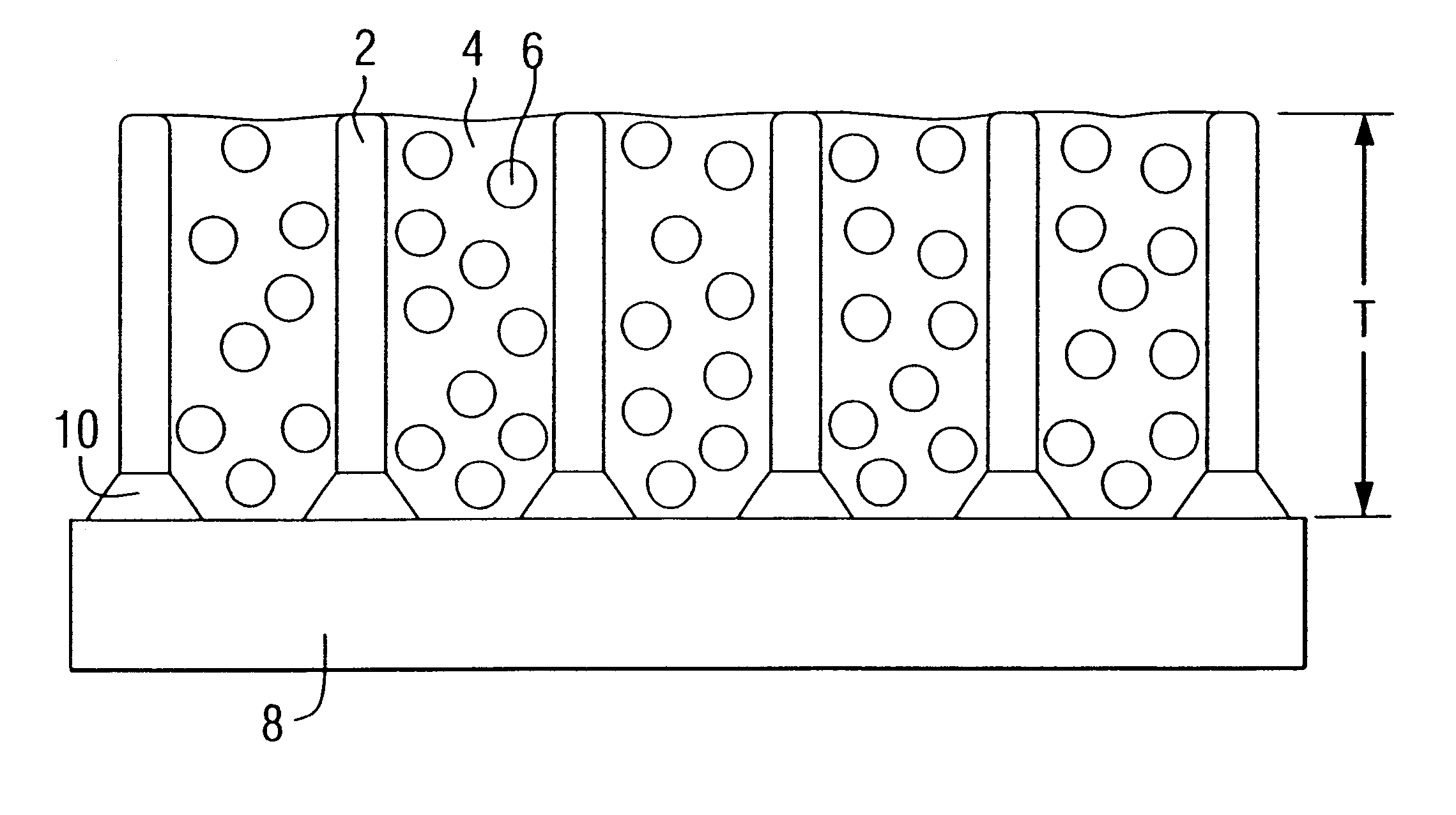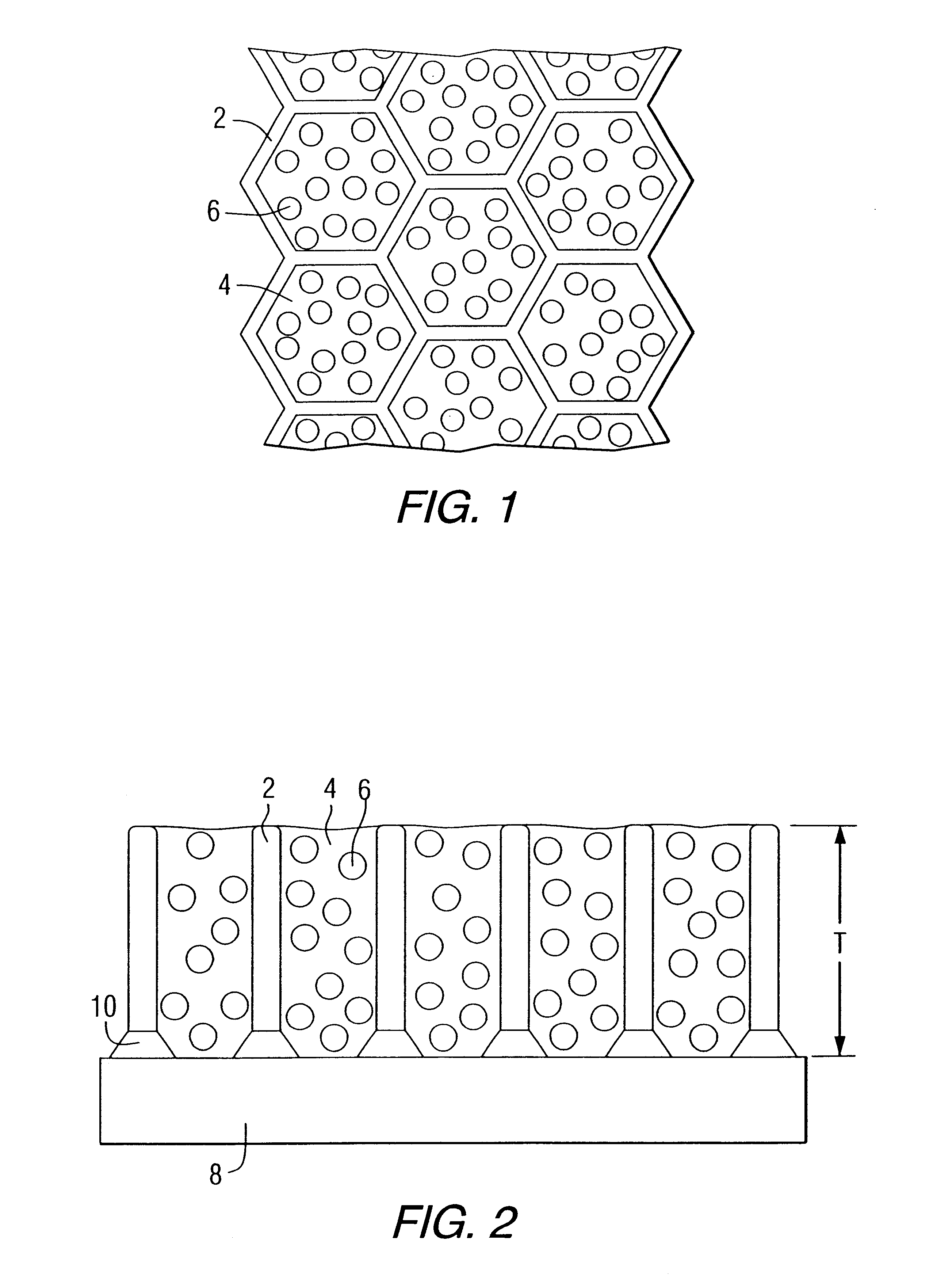High temperature erosion resistant, abradable thermal barrier composite coating
a thermal barrier and composite coating technology, applied in the direction of superimposed coating process, liquid fuel engine, light and heating apparatus, etc., can solve the problems of limited thickness, limited heat transfer characteristics of coatings, and inability to provide optimal erosion resistance and abrasion properties
- Summary
- Abstract
- Description
- Claims
- Application Information
AI Technical Summary
Benefits of technology
Problems solved by technology
Method used
Image
Examples
Embodiment Construction
specific combination of the following materials can be used to manufacture the coating system: X-45 cobalt based superalloy substrate material; PM2000 Honeycomb (125 microns wall thickness, 4 mm depth and 3.56 mm cell size); MBF 100 Braze Foil; 50% aqueous solution of monoaluminum phosphate; KCM73 sintered mullite powder (25 microns particle size) and alumina hollow spheres (1.6 g / cc bulk density, sphere diameter 0.3 to 1.2 mm). The honeycomb is brazed to the surface substrate using established vacuum brazing techniques. The MBF 100 braze foil is cut to shape and accurately placed underneath the honeycomb part and then positioned onto the substrate. The honeycomb / foil assembly is then resistance brazed in air to the substrate to tack the honeycomb into position. The tacking of the honeycomb to the substrate is to prevent the honeycomb from springing back and away from the substrate surface during the brazing cycle. Vacuum brazing is then carried out to the schedule listed in Table 3...
PUM
| Property | Measurement | Unit |
|---|---|---|
| size | aaaaa | aaaaa |
| thickness | aaaaa | aaaaa |
| size | aaaaa | aaaaa |
Abstract
Description
Claims
Application Information
 Login to View More
Login to View More - R&D
- Intellectual Property
- Life Sciences
- Materials
- Tech Scout
- Unparalleled Data Quality
- Higher Quality Content
- 60% Fewer Hallucinations
Browse by: Latest US Patents, China's latest patents, Technical Efficacy Thesaurus, Application Domain, Technology Topic, Popular Technical Reports.
© 2025 PatSnap. All rights reserved.Legal|Privacy policy|Modern Slavery Act Transparency Statement|Sitemap|About US| Contact US: help@patsnap.com



